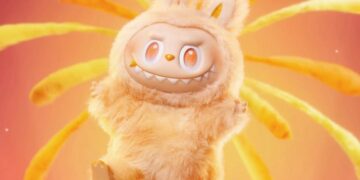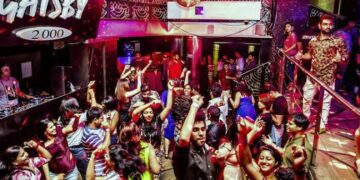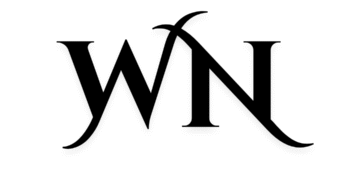Beijing, July 16, 2025 — Labubu, the mischievous, elf-like plush toy with jagged teeth and a “creepy-cute” aesthetic, has taken the world by storm, transforming Chinese toymaker Pop Mart International Group Ltd. into a $40 billion retail powerhouse. The company announced a staggering 350% profit surge for the first half of 2025, fueled by soaring global demand for the collectible goblin, with revenues more than tripling in the same period. But what’s behind the frenzy for this quirky character, and why are collectors worldwide lining up for hours, and even fighting, to get their hands on one?
The Rise of Labubu: From Niche to Global Phenomenon
Created in 2015 by Hong Kong-born, Belgium-based artist Kasing Lung as part of his children’s book series The Monsters, Labubu debuted as a collectible toy in 2019 through a partnership with Pop Mart, a Beijing-based company specializing in “blind box” toys—sealed packages that keep the contents a surprise until opened. The character, described as a mischievous yet kind-hearted elf with pointy ears and sharp teeth, struck a chord with collectors, blending a unique “ugly-cute” charm with the thrill of chasing rare editions.
The blind box model, where buyers don’t know which figure they’ll get, has been a key driver of Labubu’s appeal, likened to a collector’s gamble akin to slot machines. Limited-edition releases and strategic collaborations with brands like Coca-Cola and the manga series *One Piece* have further fueled the hype, with rare Labubu figures fetching thousands of dollars on the secondary market. In June, a life-sized Labubu statue sold for $150,000 at an auction in Beijing, while another limited-edition figure fetched $170,000 in China, underscoring the toy’s cult status.
Celebrity Power and Social Media Buzz
Labubu’s global breakthrough came in 2023 when plush keyring versions gained viral traction on platforms like TikTok and Instagram, amplified by high-profile endorsements from celebrities such as Rihanna, BLACKPINK’s Lisa, Kim Kardashian, Madonna, and Dua Lipa. These stars, spotted flaunting Labubu charms on luxury handbags, turned the toy into a fashion statement and a must-have accessory across Asia, Europe, and the United States. In the U.S. alone, Labubu sales surged by an estimated 5,000% in June 2025 compared to the previous year, according to equity research firm M Science.
The social media frenzy has also birthed a vibrant subculture, with collectors creating miniature homes, accessories, and fan fiction for their Labubus. TikTok tutorials, like those from self-proclaimed “Labubunomics” expert Kevy Oh, guide fans on securing rare figures, while long queues outside Pop Mart’s 2,000-plus global stores and vending machines have become a common sight. In some cases, the craze has turned chaotic, with reports of fights breaking out in Pop Mart stores in the UK, prompting temporary sales halts.
A Billion-Dollar Business and a Counterfeit Crackdown
Pop Mart, which went public on the Hong Kong Stock Exchange in 2020, has seen its stock soar nearly 600% in the past year, driven by Labubu’s success. International markets now account for nearly 40% of the company’s revenue, with the U.S. emerging as a key growth driver, where Pop Mart operates around 40 stores compared to 400 in China. The company attributes its 350% profit spike to heightened brand recognition, cost optimization, and effective expense control, boasting a gross profit margin of nearly 67%—among the highest for a Chinese retailer with global reach.
However, the Labubu craze has a darker side. The toy’s popularity has spawned a flood of counterfeits, colloquially dubbed “Lafufu” dolls, with Chinese authorities seizing over 46,000 fake Labubus in June 2025 alone. Pop Mart has responded by issuing authenticity guides and tightening supply chains to protect its brand. A viral rumor linking Labubu to the ancient demon Pazuzu caused a brief panic but was swiftly debunked by experts, who clarified the toy’s roots in European fairy tales and Nordic mythology.
A Cultural and Economic Milestone
Labubu’s meteoric rise is more than a toy craze—it’s a case study in turning social buzz into sustained profitability. “I’ve not seen anything like this from other toy companies,” said Vinci Zhang, senior analyst at M Science, highlighting Labubu’s unprecedented market impact. The toy’s success has also elevated Pop Mart’s founder, Wang Ning, to one of China’s youngest billionaires, with a net worth of $22.7 billion, according to recent estimates.
As Pop Mart opens its first store in Berlin and eyes further global expansion, questions linger about the sustainability of the Labubu hype. Some investors have raised concerns, with share sell-offs following Pop Mart’s massive earnings forecast, causing a 6% stock dip on July 15. Yet, with new releases, celebrity endorsements, and a thriving resale market, Labubu shows no signs of slowing down.
What’s Next for Labubu?
From a niche comic character to a global cultural icon, Labubu has redefined the collectible toy market, blending nostalgia, exclusivity, and pop culture appeal. As Pop Mart continues to innovate with new designs and partnerships, the quirky goblin is poised to remain a coveted prize for collectors—and a goldmine for its creators. Whether it’s a fleeting trend or a lasting phenomenon, Labubu has already left an indelible mark on the global toy industry, proving that even a semi-ugly monster can capture hearts and wallets worldwide.







































